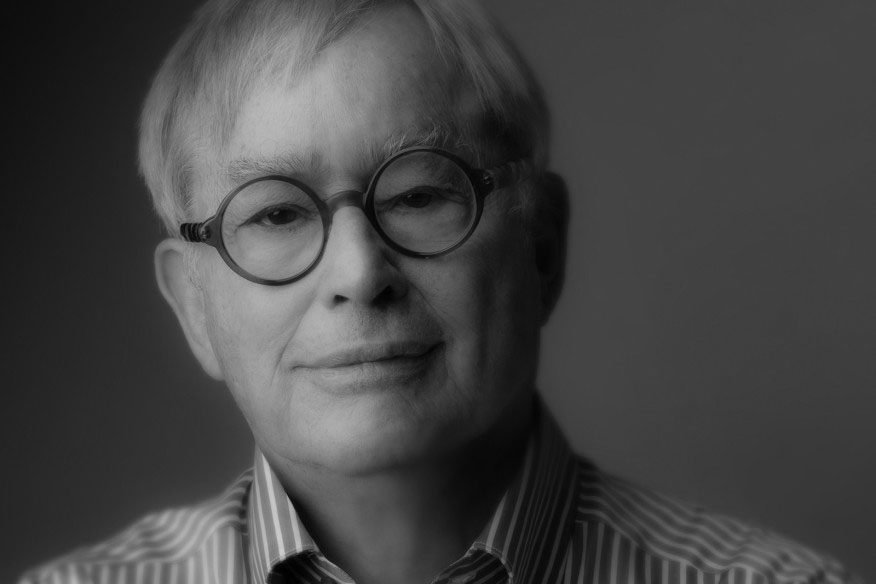RIP Robert Frasca
Visionary architect created a legacy at Reed.
Robert Frasca was a force in transforming Portland into a world-class, livable city. As a founding design partner of ZGF Architects, he helped shape the city with important civic and institutional buildings, including Tom McCall Waterfront Park, the Oregon Museum of Science and Industry, the Justice Center, and Portland International Airport. Frasca was also a major influence on the architecture of Reed. It was thus fitting that following his death on January 3 from complications from leukemia, the campus was the site of his memorial on February 11.
Few have played a greater role in what Reed looks like than ZGF. Pass under the cupola that joins the Hauser Library and the Biology Building and you move through an environment articulated by the firm. It designed the addition to Bio and both additions to the Library. You can admire canyon waterfowl standing on one of the two bridges designed by ZGF. Students live in the Grove and Bragdon Hall, both designed by ZGF, which also did designs for the remodels of Foster, Scholz, MacNaughton, and the cross-canyon residence halls. The Chemistry Building, Educational Technology Center, the Ski Cabin remodel were designed by ZGF, who also did the designs for significant remodels of the Psychology Building, Gray Campus Center, Parker House, Willard House, 28 West, the Health Center, the Dorothy Johansen House, the Sports Center, the Commons, and the Chapel.
Born in Niagara Falls, New York, Frasca earned a bachelor’s degree from the University of Michigan. While studying for his master’s degree in urban planning at the Massachusetts Institute of Technology, he was encouraged to move to Portland by the program’s dean, Pietro Belluschi, the architect for Reed’s Psychology Building (built for the biology department in 1948). Prior to his gig at MIT, Belluschi had been chief designer at the architectural office of A.E. Doyle—architect of many of Reed’s iconic buildings, including Eliot Hall and the Old Dorm Block.
“So in a sense Bob is a direct descendant of the continuum that created this campus,” says Towny Angell, director of facilities operations at Reed. “A.E. Doyle, Pietro Belluschi, and Bob Frasca, with very few exceptions, those three did it all.”
Frasca moved to Portland in 1959 and began working at Wolff and Zimmer Architects and for the Portland Planning Commission. When he returned in 1966 following a fellowship tour of Europe, he cofounded ZGF with Norm Zimmer and Brooks Gunsul. Frasca’s buildings at Oregon Health & Science University, including Vollum Institute and Doernbecher Children’s Hospital, put ZGF on the map. He pioneered a holistic and humane approach to the design of research facilities and pediatric hospitals integrating nature, healing gardens, and art long before research proved their importance. Major projects followed including Fred Hutchinson Cancer Research Center in Seattle; National Institutes of Health Mark O. Hatfield Clinical Research Center, in Bethesda, Maryland; Mortimer B. Zuckerman Research Center at Memorial Sloan Kettering, in New York City; Dana Farber Yawkey Center for Cancer Care, in Boston; and Max Planck Institute for Neuroscience, in Jupiter, Florida.
The firm created impressive corporate headquarters for Intel, Microsoft, the U.S. Army Corps of Engineers Headquarters for the Seattle District, Cliff Bar in Emeryville, California, and Cascade Bicycle Club in Seattle. In 2016, the firm, which has offices in Portland, Seattle, Los Angeles, Washington DC, New York City, and Vancouver BC, was named as the best in the country by Architect, the official publication of the American Institute of Architects.
“Bob’s intelligent thoughtfulness, humility, and commitment to finding remarkable architectural solutions to clients’ needs matched to budgetary realities resulted in remarkable, lasting architecture,” says Angell. “He took an extreme personal interest in minute details that mattered, and on more than one occasion he said that Reed has a special place in his body of accomplishment. In all of those 30 years, we were the most consistent of his clients, and our projects were among just a handful of his favorite for design, process, and execution.”
Read his full Oregonian obituary: http://www.oregonlive.com/business/index.ssf/2018/01/robert_frasca_architect_who_he.html
Tags: Reed History, Campus Life
